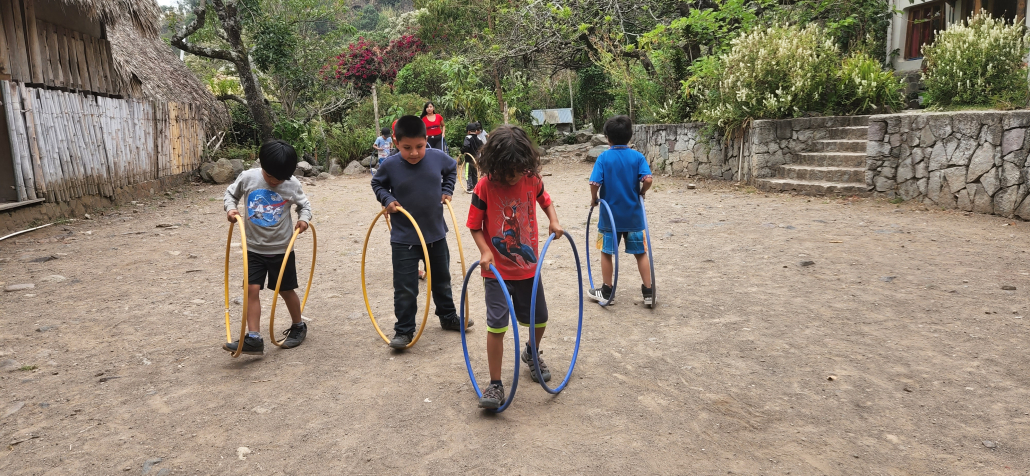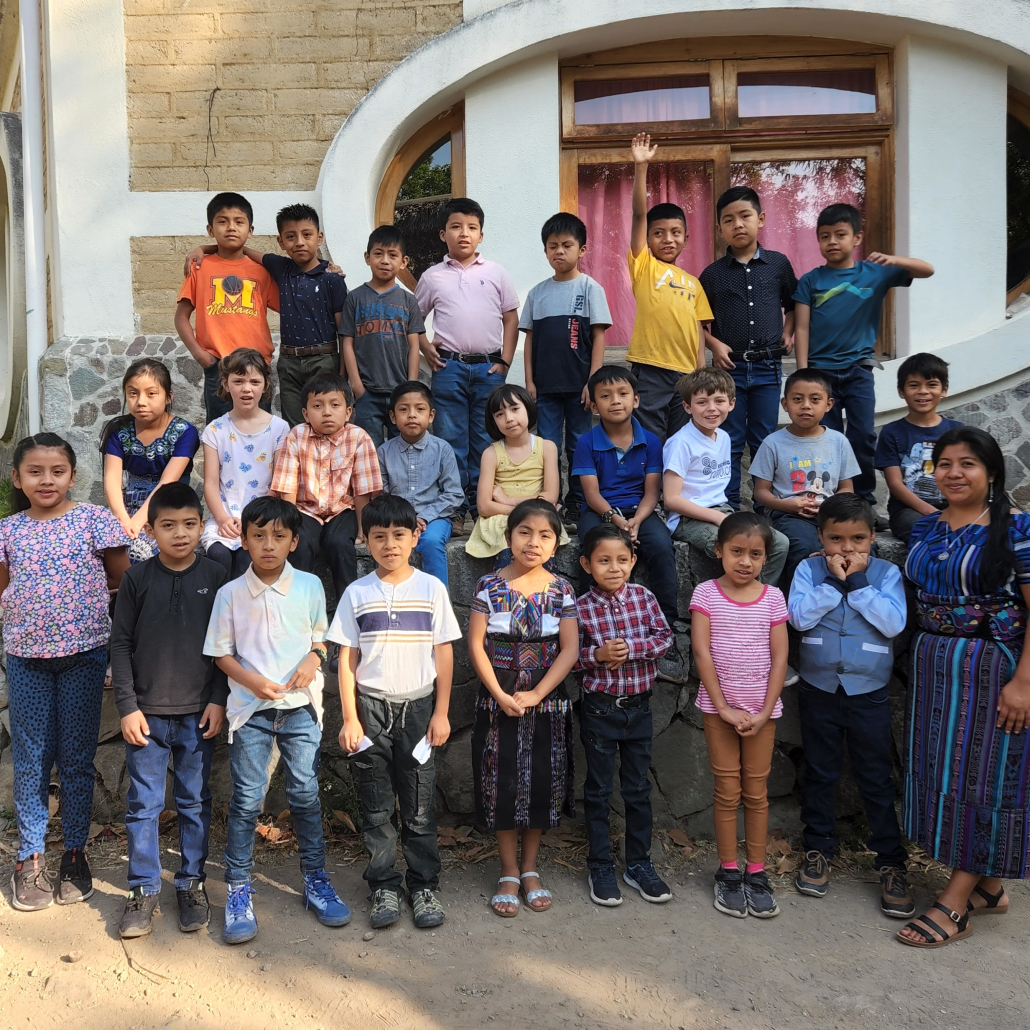
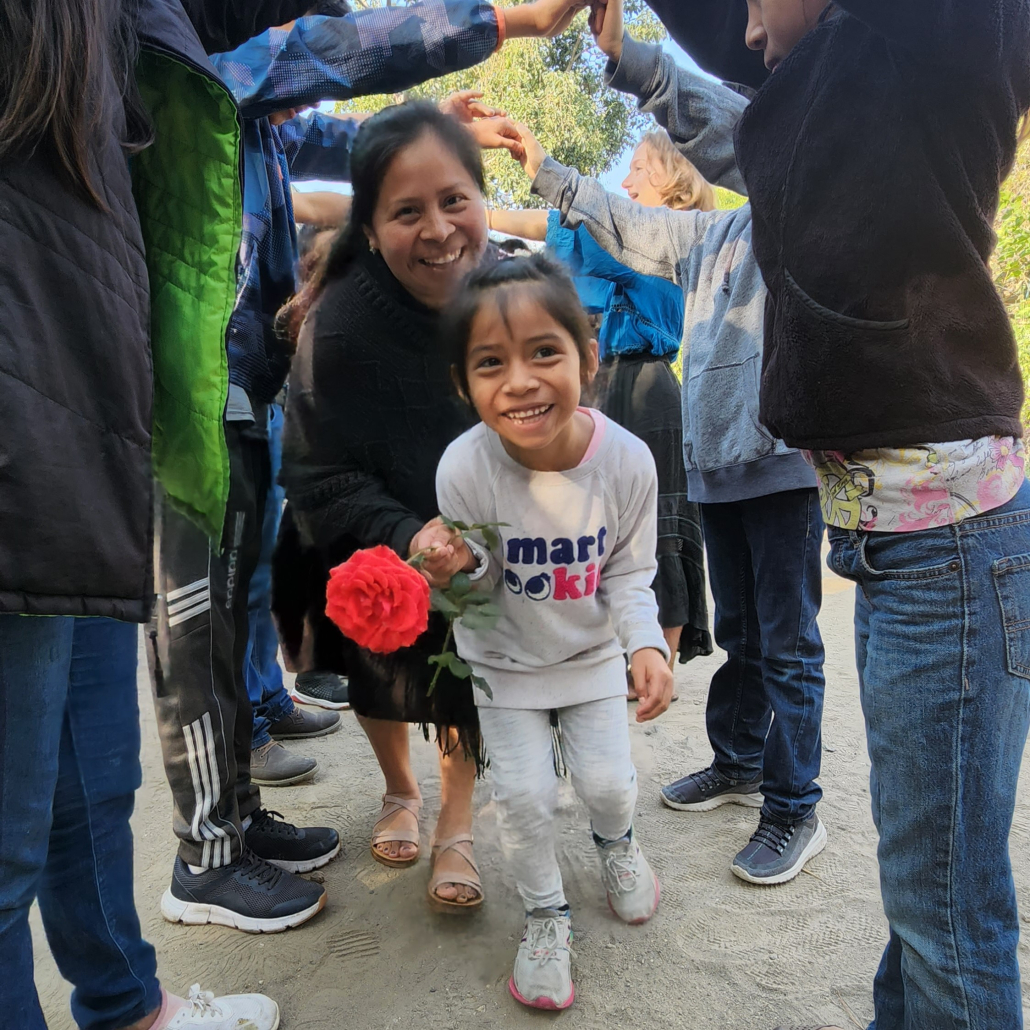
A Typical Day
Each day begins with the “main lesson” and during this time children study the traditional academic subjects (language arts, math, science, history). After a block of several weeks, we move to another subject, and usually return to each subject for another 2–3 blocks throughout the year. Great care is taken to teach each subject through the arts and movement. Whereas kindergarten children are taught largely by imitation, children in the grades begin to vastly expand the horizons of the imagination.Lighting the fire of imagination is the key to teaching children in the lower grades.
Our desire to teach to the whole child is reflected in our daily schedule: Children are taught in three languages: English,Spanish and Kaq’chikel (the local Mayan language). The main lessons each morning are taught in Spanish, and language classes are taught in the late morning in Spanish and Kaq’chikel. After lunch, classes are held in the specialty subjects, like music, art (drawing, painting, sculpture), handwork (sewing, knitting, weaving), gardening, and physical education. We also make frequent excursions either to the lake for swimming lessons or into the mountain for day hikes.
Students generally enter the first grade at age 7, when the teeth begin to change. If there is doubt about whether entering the first grade is appropriate for a child given his/her stage of development. our teachers will conduct an evaluation of the child in consultation with the parents.
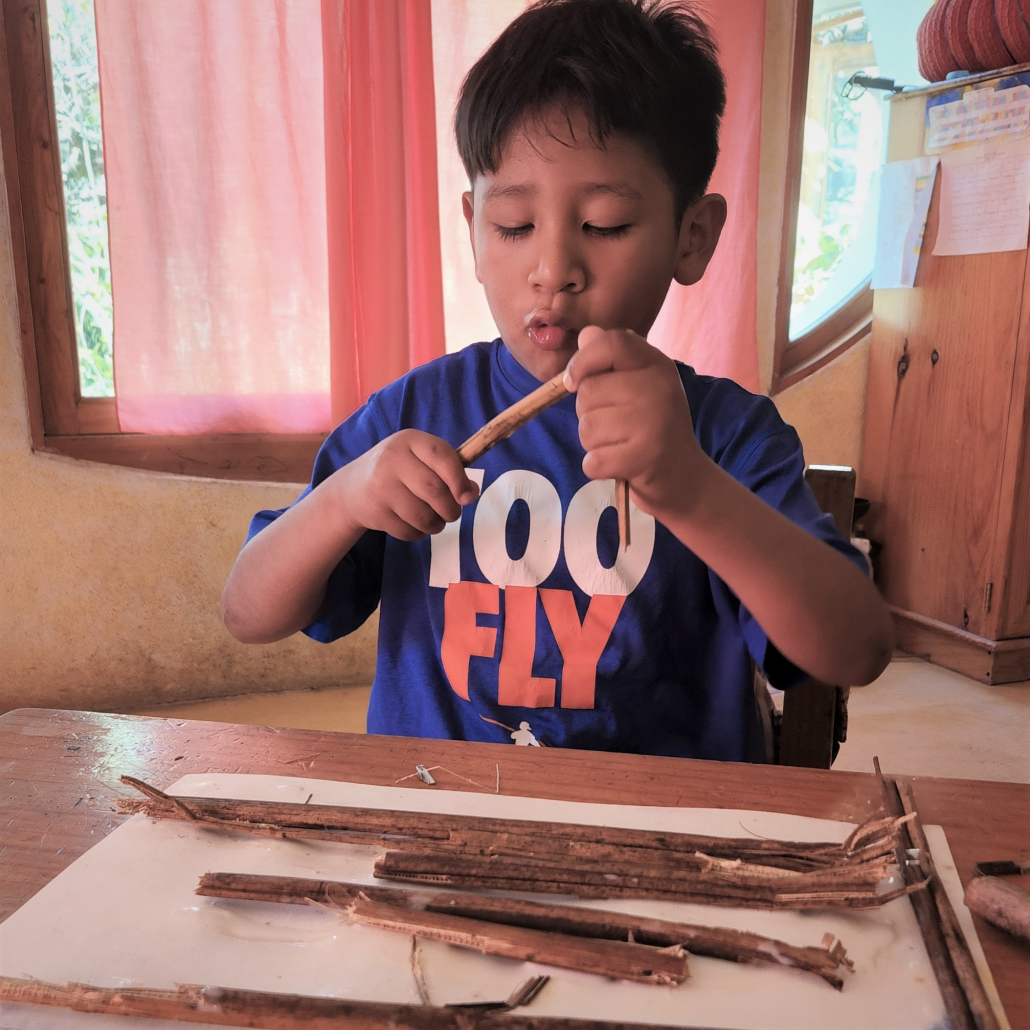
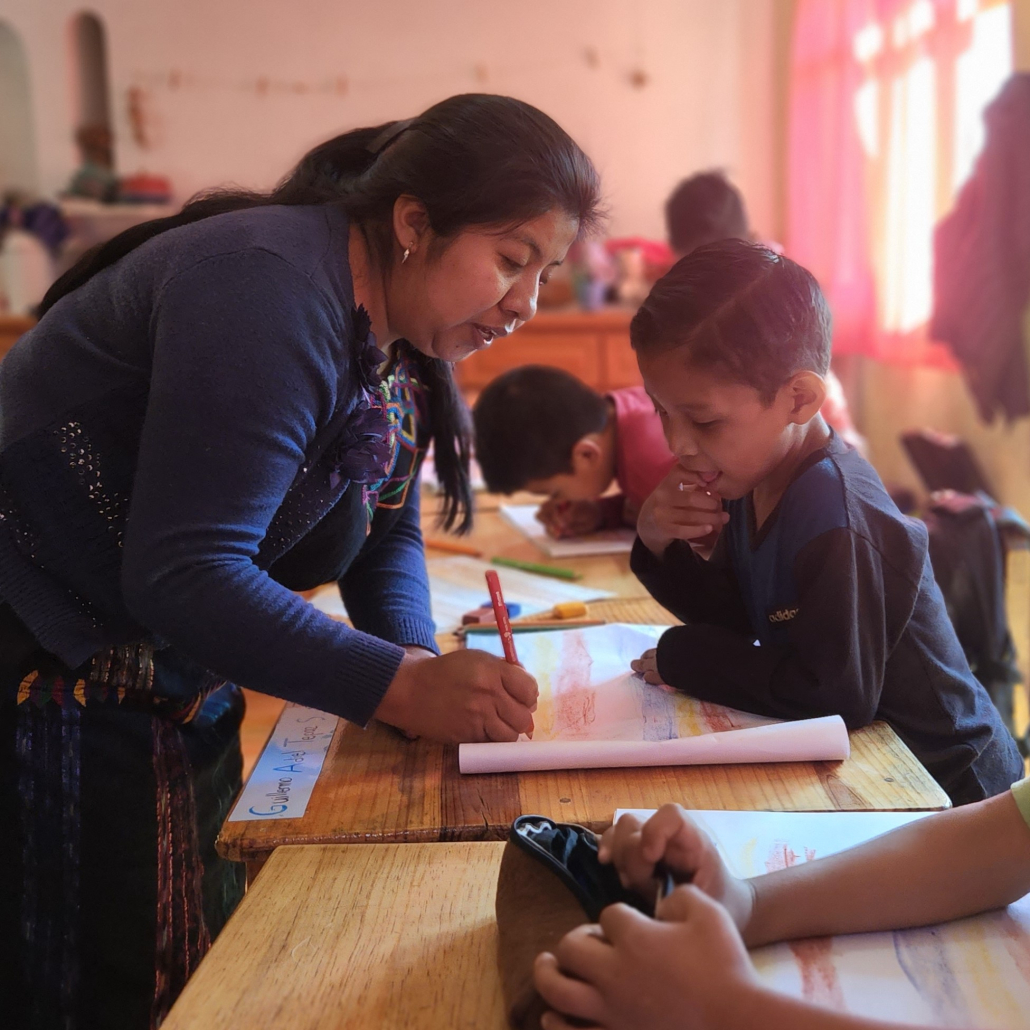
The seventh school year marks the beginning of “formal” schooling. In these first seven years of life the child learns to become familiar with the physical body, to make it his/her home, developing orientation in space, acquiring the ability to take vertical erect posture and walking, talking and thinking.
The forces concentrated on growth and physical construction now become active to develop independent thinking in images and representations. They are still at this age in a dreamy state, so many learning elements come through activity and imitation. The children are taken to the first experience of forms, sounds, sequence of letters and numbers through pictures, rhymes and stories. Repeated practice that includes movement, poetry, drawing and painting, allow them to recognize and memorize.
The objectives of this first grade are also the growing reverence for nature, developing respect for others, awareness of the environment, arousing an interest in the world and a sense of confidence in their teachers.
At age 8, children are much more aware of what is happening around them, that dreamer of the first grade gives way to feelings of contrast: the child becomes more aware of both the greatness and the failings of the human, and there is a growing temptation for mischief.
Students continue becoming familiar with the basics of mathematics and literature, and in the movements of gross and fine motor, either jumping, catching and throwing the ball, knitting or playing the flute, developing a repertoire of activities and skills that were introduced in first grade. Thus the intellect is awakened through the artistic approach.
Sources: “Plan de Estudios de la Pedagogía Waldorf-Steiner”, de Tobias Richter; “Pedagogía Waldorf, una Educación hacia la Libertad”, de Frans Carlgren
